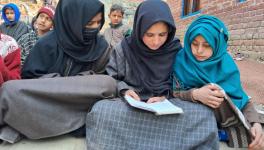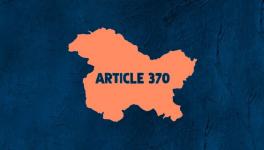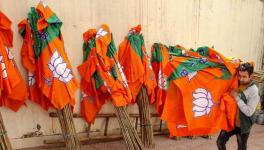Art 370: Kashmiri Civilians Caught in Crossfire of Suspicion
File Photo.
Ever since the abrogation of Article 370, the national security narrative has come to weigh even more heavily on Kashmir and its people, be it with respect to their political and socio-economic concerns or day-to-day life. The security discourse that had encroached into “democratic spaces” in Kashmir over a long time, leaving both jostling for domain, has intensified after the erstwhile state of Jammu and Kashmir was turned into two Union Territories on 5 August last year.
The abrogation was based on the Centre’s assurance that it would uproot militancy from the Valley. Therefore, the abrogation was accompanied with enhanced local level intelligence-gathering, increased instances of cordon-and-search operations, and so on. All of these have repercussions for people living in the state, especially in the Valley.
As the angst of civilians has risen, along with spurts in militant activities, the already troubled relationship of the Centre with Jammu and Kashmir has only been further problematised. Indications are that insurgent activities are localised, and, most recently, that militant concentration is relocating from South Kashmir to northern parts of the Valley. [The original base for most militants, in the past, was generally considered to be North Kashmir.] Recently, the Army accepted there was prima facie evidence that some of its own men had exceeded the AFSPA mandate. This has implications for Kashmiris, who are already caught in the crossfire between the security forces and militants.
Political and socio-cultural impact
At the political level, there have been two major changes in Jammu and Kashmir over the last year: it has administratively transitioned from full-fledged state to two Union Territories, and therefore is under more direct control of the Centre, which has gained a firmer foothold over domestic affairs in the region. The immediate implication has been a growing security footprint and heightened political and economic discretion of the central government, both of which deeply affect civilians.
The second political change lies at the intersection of India’s image as a rising democratic country and the hyphenation of its relationship with Kashmir since the abrogation. The Kashmir dispute has also been internationalised, including by the smear campaign by Pakistan, supported by Turkey, Malaysia, and so on.
At the social level, the angst of Kashmiri people is growing even more phenomenally than in the past. While physical resistance may have been nipped with intelligence-gathering, heavy securitisation and attempts to placate social discontent by inviting investments, a simmering disquiet persists among Kashmir’s people. This is because of the Centre’s heavy-handed approach, but more so because of the common people’s inability to live a “normal” life.
Kashmiris living in the Valley face tremendous hardships today. The most outstanding issue is the complicated situation civilians find themselves in, caught as they are between the jousting of security personnel on the one hand and separatists on the other. For civilians, picking one or the other side amounts to jumping from the proverbial frying pan into the fire. Both security personnel and insurgents suspect and charge civilians with supporting their rivals, and straddling the fear generated by these opposite groups is impacting local lives like never before.
There is a feeling of alienation, perhaps most pronounced among people and communities that live closer to the international border. For instance, those who earn a living from small-time jobs such porters for the Army earn the mistrust of locals, who charge them with “helping” security personnel. Add to this their perpetual fear of mortar shells from across the border. Zakir Khan, 22, who was injured in one such shelling on 7 August this year expressed the aforementioned fear to one of the above authors.
Security personnel have upped the ante in terms of collection of intelligence through their local networks. This has given rise to an increasing number of “mukhbirs” or informants, who are used by both sides. Of late, the number of such informants has increased, owing to existential crises due to rising unemployment and a constant fear of dispossession and loss looming large.
These authors gather from day-to-day interactions in Jammu and Kashmir that people, too, sense the significant increase in the number of informers over the last year. Getting exact numbers of informants is, by definition, impossible, but a number of factors—the broad consensus among resident Kashmiris that there is excessive surveillance, their fear that anyone could be an informer and, most of all, the heightened incentives for tip-offs—confirm the growing presence of informants in their midst.
In some places visited personally, such as Redwani and Khudwani in Kulgam and parts of neighbouring Shopian, it turned out that fatalities among both Over Ground Workers or OGWs and informers have increased significantly. [OGWs is the term used for those who are working with militants, while informants are those who are believed to be on the side of the security establishment.] In any case, the growing fatalities have generated tremendous waves of fear and anxiety among the youth. They fear they would be labelled as either OGW or informers, which would invite lethal consequences.
Furthermore, the security establishment’s attempts to lure or threaten local youth for information has also had a pernicious impact on the present generation of Kashmiri youth. The apparent “localisation” of the insurgency has further compounded the threats politicians at the village and block level face from insurgents, along with local policemen and informants. The recent attacks on security personnel in Kashmir have instilled an extreme sense of fear and apprehension among security personnel too. The forces have in turn cultured suspicion as an offensive tool, even against civilians.
Effects on intra-state diversity among Kashmiris
The intra-state heterogeneity of Kashmiris, particularly between some northern, southern and bordering areas, plays out very subtly. In certain cases, this diversity adds to already existing mistrust, suspicion and sense of loss. It adds to the fear of any sort of ethnic defection getting co-opted by the security apparatus. This has left the people in a state of perpetual paranoia and suspicion. The vagueness of terms and labels such as “mukhbir” and “OGW” has complicated lives in the wake of excessive securitisation. An additional complication is that most militant groups are believed to have their own OGWs, but the vagueness of the label brings everyone under the radar.
The status of OGWs, by virtue of working with agencies that are at cross purposes with one another, is itself very complicated. Caught between the devil and the deep blue sea, the OGWs are viewed with suspicion by all sides. The mutual distrust of different militant groups often leads to charges against them of being informants. Meanwhile, the security forces perceive the OGW as any person who indulges in a wide range of prohibited activities—an interpretation so open-ended that it leads to rampant loss of life.
In Redwani and Khudwani in particular, these dynamics play out starkly. In 2018, Arif Ahmed paid with his life for being cross-labelled as an informant by militant groups and OGW by security personnel. Another man, Sharjeel, was shot by the Army in the same year on wrongful suspicion of being a “stone-pelter”.
These complications have made most people living in Kashmir vulnerable. The presence of Ikhwanis has added yet another dimension to the security apparatus-militant situation. By transitioning from their militant affiliations to working with security agencies, the renegade Ikhwanis lack trust from all sides. They used to be inducted into the Special Operations Group, infamous for their atrocities, which was merged with the local police force. A further layer in the security dynamics in the state consists of the SPOs, who are hired on contract, without formal training, and depend on supplying the security forces with a major piece of information or a large operation in order to be regularised as police constables.
The SPOs are often the first in the line of fire of militants. Now, SOGs, SPOs and even some “news agencies” are seen as collaborators of the State, with distinctions between them collapsed, thus making room for ethnic defection. The result is a forced interplay of existing marginalities in the state under the security-intelligence umbrella.
For these reasons, the abrogation of Art 370 has led to a vigorous intensification of hostilities and suspicion in Kashmir. There have been attempts to use security in such a way that it has created social fissures among Kashmiris. The outcome has been to increase the social, cultural and political vacuum in the region. The fallout is also being felt on interpersonal relations in Kashmir. They are becoming so stretched that personal animosities are heightened and scores settled by one group, which provides false information that implicates its rival. The result is disproportionate use of harsh security laws even when the original cause of dispute was minor, such as a scuffle. Trust has dwindled all around.
These developments have even impacted even the cultural fabric of the society. Kashmiriyat has become a term people are ready to loathe, see as another representation of the cultural baggage imposed on them by the rest of India to question any expression of their angst against the state.
This article is based on ground reports collected by Tarushikha Sarvesh, assistant professor, Aligarh Muslim University, as part of an ICSSR-funded project. Vivek Mishra is an independent analyst based in Delhi. The views are personal.
Get the latest reports & analysis with people's perspective on Protests, movements & deep analytical videos, discussions of the current affairs in your Telegram app. Subscribe to NewsClick's Telegram channel & get Real-Time updates on stories, as they get published on our website.
























